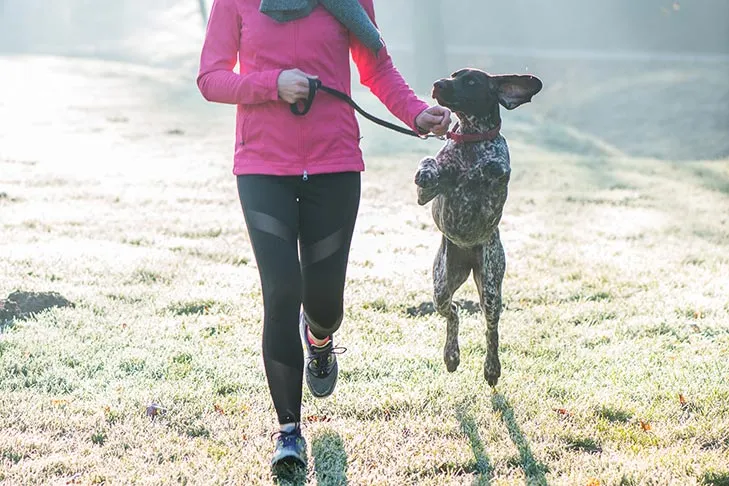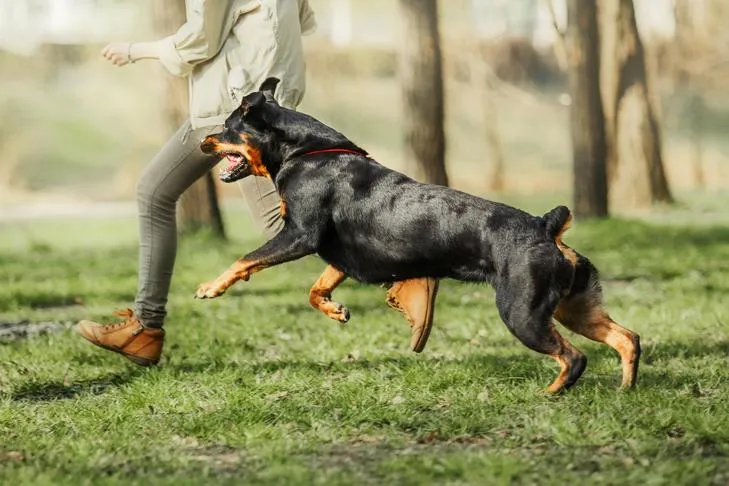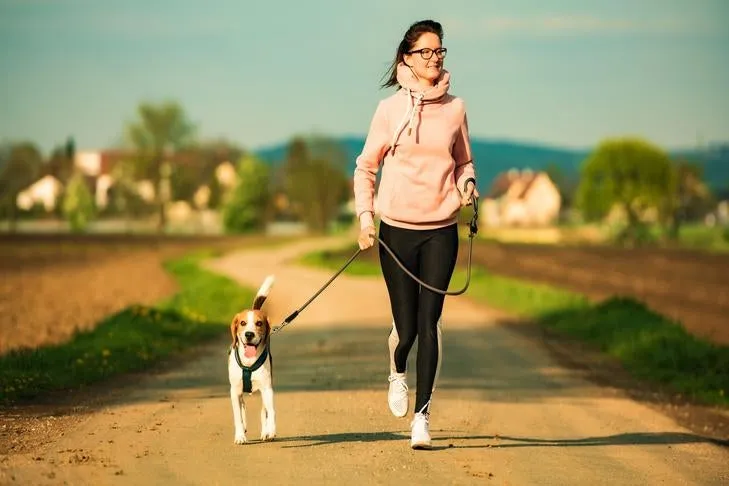Running with your dog can be an incredibly rewarding experience, fostering a deeper bond and keeping both of you physically fit. As an expert in canine behavior and a passionate advocate for dog training, I understand the nuances involved in transforming your furry friend into a reliable running partner. This guide will walk you through the essential steps to safely and effectively teach your dog how to run alongside you, ensuring an enjoyable and beneficial activity for both of you.
Choosing the Right Canine Companion for Running
Before embarking on your running journey, it’s crucial to assess if your dog is physically and temperamentally suited for this activity. Not all breeds are created equal when it comes to endurance and stamina. Generally, puppies are not candidates for long-distance running. Their skeletal systems are still developing, and forcing them into strenuous activity can lead to long-term health issues. For most breeds, it’s advisable to wait until they are at least 18 months old.
Beyond breed predispositions, every dog possesses a unique personality. Some dogs naturally have more energy and a higher drive for physical exertion than others. Research your dog’s specific breed characteristics and consult your veterinarian for a thorough physical examination. This check-up will help determine if your dog has any underlying health conditions that might make running unsafe. Ensuring your dog is a good fit for running is the foundational step towards a successful partnership.
 German Shorthaired Pointer running with a woman in the early morning.
German Shorthaired Pointer running with a woman in the early morning.
Mastering the Basics: Loose-Leash Walking First
The prerequisite to running with your dog is their mastery of loose-leash walking. A dog that pulls incessantly during a leisurely stroll will become a serious hazard at running speeds. The environment is a constant barrage of exciting stimuli – intriguing scents, scurrying squirrels, and passing people – all of which can divert your dog’s attention. To achieve a slack leash, where it forms a “J” shape, you must consistently reward your dog. This reinforcement can come in the form of high-value treats, engaging toys, or verbal praise.
Establishing a consistent position for your dog is also paramount. Whether you prefer them on your left or right side, choose one and stick to it. This prevents them from weaving in front of you or tangling your legs, which can lead to falls. Begin training this at a walking pace, always considering your reward placement. Deliver treats to the side you want your dog to stay on. Once they’ve solidified their position on one side, you can gradually introduce training for the other side with a distinct cue. For added convenience and control, consider using a hands-free dog leash system. This allows you to maintain a secure connection while keeping your hands free for balance and natural arm movement.
For more information on achieving this essential skill, explore our guide on how can i teach my dog to poop outside which also touches upon establishing consistent routines and rewarding desired behaviors.
Introducing Speed Cues for Running
Once your dog is reliably walking by your side with a loose leash, it’s time to introduce cues that signal a change in pace. Just as you might have a verbal cue like “let’s go” to initiate movement during a walk, you’ll need distinct commands to signal the transition to a run. Phrases like “get running” or “move it” can effectively communicate to your dog that it’s time to pick up the pace. Providing clear verbal signals will help your dog understand your expectations and respond appropriately.
To teach these running cues, intersperse short bursts of jogging or running into your regular walks. Immediately before you increase your speed, issue the designated running cue. Reward your dog generously when they quickly catch up and maintain pace beside you. Similarly, you can teach a cue, such as “whoa,” to signal your dog to slow down. This gradual introduction to speed changes ensures your dog doesn’t get overwhelmed and learns to associate the cues with the desired actions.
 Rottweiler running in the park playing with its owner.
Rottweiler running in the park playing with its owner.
Building Canine Endurance Gradually
With your dog now adept at staying by your side and responding to speed cues, the next step is to build their physical endurance. Just like human athletes, dogs require a progressive approach to training to avoid injury and burnout. Begin by incorporating short running segments into your walks. With each subsequent outing, gradually increase the duration of your runs while decreasing the walking intervals. Over several weeks, your dog’s stamina will increase, preparing them for longer running sessions.
This progressive overload is key to developing their cardiovascular system and strengthening their muscles and joints. Pay close attention to your dog’s body language during these sessions. Signs of fatigue include excessive panting, lagging behind, or a general lack of enthusiasm. Remember, your dog may want to please you and continue running even when they are tired.
To further enhance your dog’s obedience and responsiveness, consider teaching them essential commands. For breeds like German Shepherds, specific commands can greatly improve their trainability and overall behavior. You can find valuable insights on this topic in our article about commands to teach a german shepherd.
Ensuring a Safe and Enjoyable Running Experience
Once your dog is conditioned and ready to be your running companion, prioritizing their safety and enjoyment is paramount. Implement these essential tips to make every run a positive experience:
- Warm-up and Cool-down: Begin each running session with a few minutes of brisk walking to warm up your dog’s muscles. Similarly, conclude your run with a cool-down walk.
- Monitor Weather Conditions: Dogs are more susceptible to heat and humidity than humans. Avoid running during the hottest parts of the day, and be mindful of pavement temperatures, which can burn paw pads.
- Hydration is Key: Always carry water for your dog and offer it frequently, especially on longer runs or in warmer weather.
- Provide Frequent Breaks: Allow your dog opportunities to rest, relieve themselves, and explore their surroundings. These breaks are crucial for their physical and mental well-being.
- Leash Safety: Only allow your dog to run off-leash in safe, designated areas where it is legal. Ensure they have a reliable recall command, meaning they will come back to you immediately when called, even with distractions.
- Observe for Fatigue: Be vigilant for signs that your dog has had enough, such as excessive panting, slowed pace, or a reluctance to continue.
 Beagle on leash running with a woman on a trail.
Beagle on leash running with a woman on a trail.
Adapting to Extreme Weather Conditions
Dedicated runners might brave various weather conditions, but there are times when the elements become too extreme for your canine companion. On days when outdoor running is not feasible due to intense cold or heat, you can still maintain your dog’s fitness with indoor exercises. For smaller dogs, a game of fetch down a long hallway or up and down carpeted stairs can provide a good cardiovascular workout. You can also create an indoor obstacle course using household items like hula hoops or cardboard boxes. Many professional training facilities offer indoor agility classes, which are excellent for encouraging running and jumping in a controlled environment.
For a more controlled indoor option, consider using a treadmill. While specialized dog treadmills are available, a standard human treadmill can also work. Ensure the treadmill is long enough for your dog’s size. However, introducing your dog to a treadmill requires patience and proper technique. Research treadmill training methods or consult a professional dog trainer to teach your dog to use the machine safely and enjoyably. Crucially, never tie your dog to a treadmill or leave them unsupervised on it.
Conclusion
Teaching your dog to run with you is a journey that requires patience, consistency, and a deep understanding of your dog’s needs. By focusing on building a strong foundation of loose-leash walking, introducing speed cues gradually, and prioritizing safety and endurance, you can cultivate a rewarding running partnership. Remember that every dog is an individual, and their progress may vary. Celebrate small victories, remain consistent with your training, and most importantly, enjoy the process of becoming running partners with your beloved canine friend. If you’re seeking professional guidance or more personalized training plans, don’t hesitate to contact a certified dog trainer to ensure you and your dog achieve your running goals safely and effectively.
